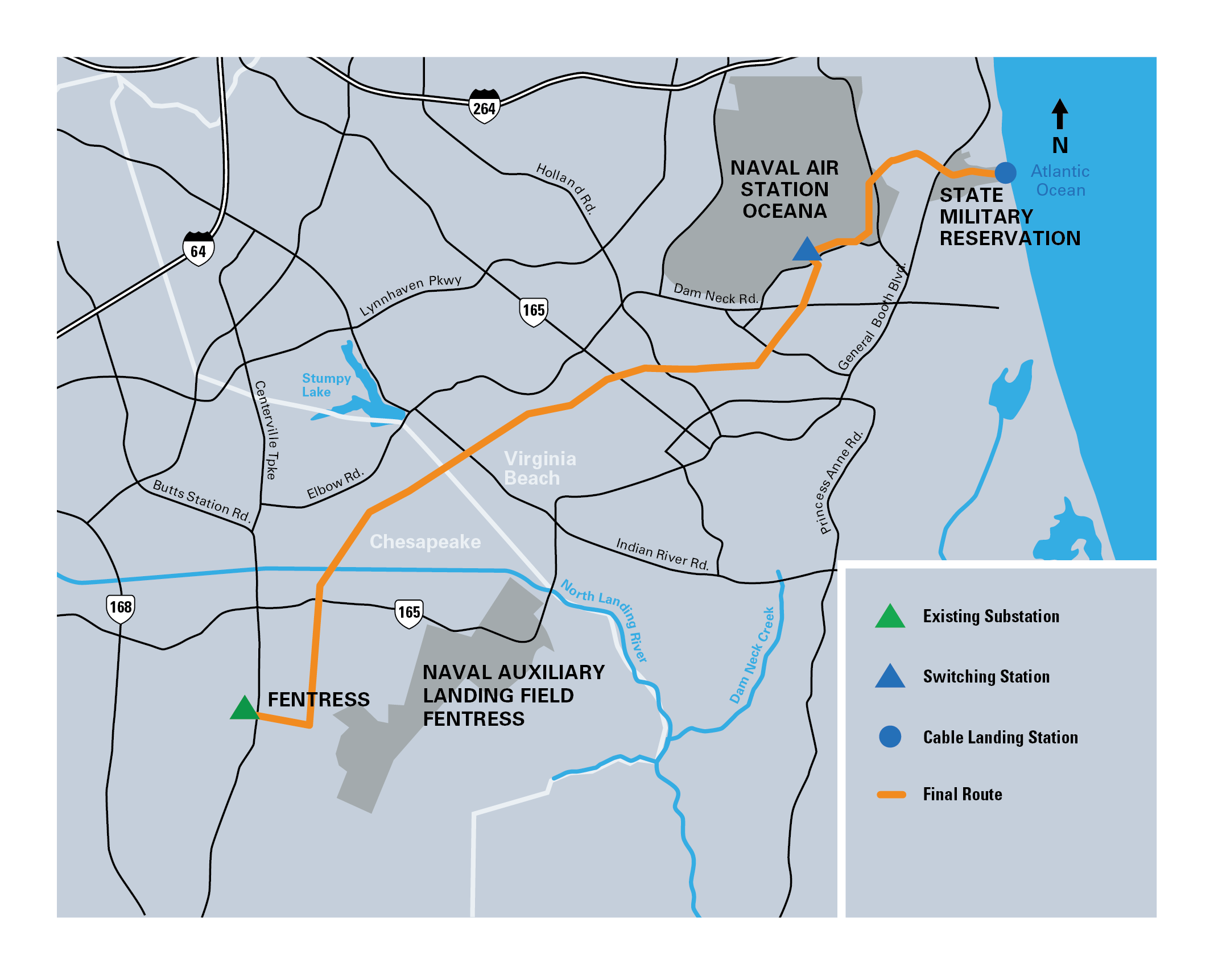Community Engagement
To identify transmission route options from Naval Air Station Oceana to Fentress Substation, Dominion Energy conducted a study that included the Hampton Roads region and extensive engagement with the community.
With this study, we reviewed the locations of neighborhoods, public use and gathering spots, schools, churches and parks, and important natural resources such as wetlands and historical and archaeological sites. We also evaluated existing rights-of-way and opportunities to co-locate with other infrastructure, such as existing transmission lines, roads and railways.
To better understand the community's needs and how best to bring the clean, sustainable energy onshore to homes and businesses, we held virtual and in-person public meetings and conducted numerous individual and small group meetings, topic-specific workshops and roundtables. In addition, we consulted with a local historian and directly engaged historically underrepresented communities and Native American tribes. We also deployed an online interactive tool called GeoVoice, which provided community members the opportunity to review the route options and share feedback.
Explore GeoVoice
As a result of community involvement and input, Dominion Energy identified a proposed transmission line route and several alternatives and filed a Certificate of Public Convenience and Necessity (CPCN) with the Virginia State Corporation Commission (SCC) on November 5, 2021. After nine months of careful review, the SCC selected the transmission line route that will support the CVOW project.

Transmission Line Route
Of the options considered by the State Corporation Commission, the proposed and approved route maximizes use of publicly owned land and existing rights-of-way. It also minimizes, to the greatest extent possible, impacts to private property, the community, the environment, and historical and cultural resources.
The route begins at State Military Reservation, where the undersea cables supporting the offshore wind turbines come ashore. The route then proceeds underground to a new switching station at Naval Air Station Oceana. Once there, it continues overhead toward Dam Neck Road, connecting with an existing transmission right-of-way near the Castleton neighborhood.
The route proceeds west, overlapping the former Southeastern Parkway and Greenbelt roadway project until just past Princess Anne Road. It then moves southwest, crossing Salem Road and the Intracoastal Waterway in Chesapeake. The route turns south toward Battlefield Golf Course before heading west into Fentress Substation, which will be expanded to accommodate the new equipment needed to support the additional transmission lines that will connect offshore wind energy to the broader electric grid.